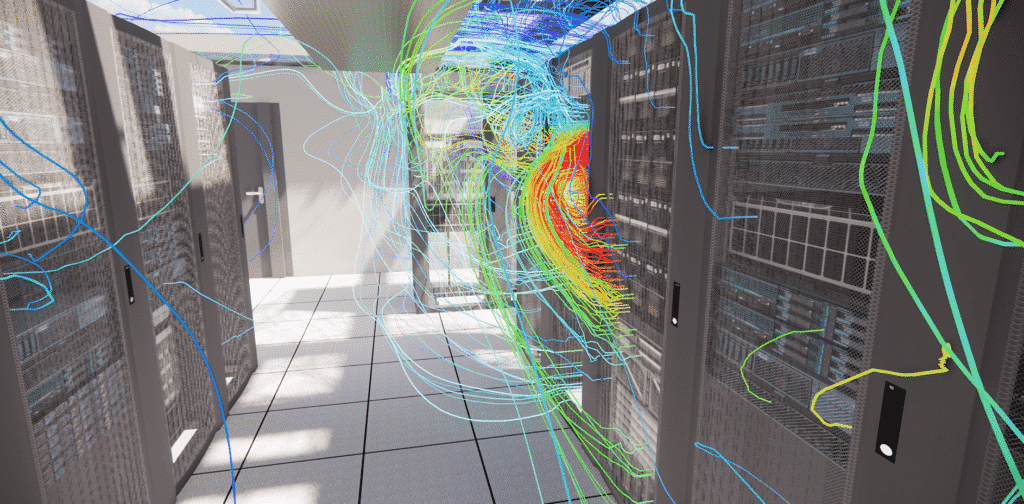Data center fire safety: Automatic Gas Extinguishing Systems (IEAG)
Accueil » Data Center » Data center fire safety: Automatic Gas Extinguishing Systems (IEAG)
Automatic Gas Extinguishing Systems (IEAG)
- Extinguishing gas
- Data storage room
- Fire risk analysis
- Study of critical failure scenarios
- Inhibitor gases
- Fire safety
- Fire control
- Novec™ 1230 (FK 5-1-12)
- Tailor-made solutions
- Data center audits and diagnostics
- Climate engineering of data centers
- Thermal study of technical premises
- Generators
- Designing your data center’s digital twin
- Urban heat island impact study for data centers
- External CFD simulation for data center
- Energy optimization and PUE calculation for data centers
- Data Center Fire Simulation
- Data center audits and diagnostics
- Climate engineering of data centers
- Thermal study of technical premises
- Generators
- Designing your data center’s digital twin
- Urban heat island impact study for data centers
- External CFD simulation for data center
- Energy optimization and PUE calculation for data centers
- Data Center Fire Simulation
Our Data Center projects :
Our fire safety projects :
Fire protection solutions for data centers
Definition of a fire
A fire in a data center is a potentially catastrophic event that occurs when fire spreads in an environment that is highly concentrated in IT equipment and connections in these critical data centers.
Fires in data centers can be triggered by a variety of external and internal causes, such as electrical shorts, overloads, connection faults, high temperatures, liquid leaks, human error, careless storage of combustible materials or design errors in fire safety systems.
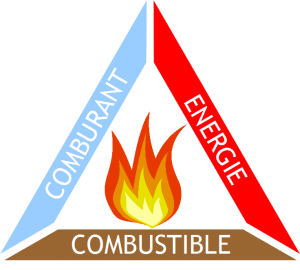
Schematic diagram of an adiabatic air cooler.
Fire simulation in a data center
Data center protection
In the context of data centers, protection can be defined according to these three categories:
- Building protection: Building protection consists of comprehensive measures to prevent fires and minimize their impact on the data center’s structure and equipment. This includes design and construction strategies such as the use of fireproof materials in the building structure, the installation of fire detection and suppression systems, and the provision of containment devices such as fire walls, fireproof doors and specific ventilation systems to limit the spread of smoke and flames.
- Premises protection: Premises protection focuses on the **specific areas inside the data center where high values are generally concentrated, such as server rooms, data storage rooms and communication centers. These premises can be equipped with specific fire detection systems, such as smoke or heat detectors, as well as fire suppression systems adapted to quickly and effectively extinguish any outbreak of fire in these sensitive areas.
- Object protection: Object protection concerns the individual protection of electronic equipment and devices present in the data center. This is a more targeted approach to protecting each valuable object separately. This protection can be achieved by using fireproof safes to store critical data media, safety cabinets to protect sensitive equipment from heat or smoke, or by using specific fire detection systems for sensitive objects.
It is important to note that these different categories of protection are not mutually exclusive and can complement each other. In a data center, it is generally necessary to adopt a holistic approach that combines these different protective measures to guarantee the overall fire safety of the building, premises and equipment. This minimizes the risk of fire, reduces potential damage and maintains the availability of essential IT services even in the event of an incident.
The protection objective
In the context of fire fighting in data centers, three main objectives can be identified:
- Fire extinguishing: Theprimary objective is tocompletely extinguish the fire as soon as possible. This can be achieved with fire detection systems that can quickly alert data center occupants and trigger suitable suppression systems, such as gas or foam systems, to effectively extinguish the flames. The aim offire extinguishing is to completely eliminate the source of ignition and prevent it from spreading.
- Fire reduction: Ifcomplete extinction of the fire is not immediately possible, theaim is to reduce the intensity and spread of the fire. This can be achieved by measures such as separating risk areas, using containment systems and evacuating occupants to safe areas. Reducing the risk of fire limits property damage and personal safety, while enabling fire-fighting teams to intervene in a more controlled manner.
- Fire control: Once thefire has been brought under control or reduced, theaim is to maintain control of the situation. This may involve continuous monitoring of the affected area, carrying out checks to ensure thatno residual fire is present, and implementing additional protective measures to prevent any recurrence of the fire. Fire control prevents the risk of recurrence and ensures the ongoing safety of the data center environment.
These objectives are closely linked and form a comprehensive approach to fire management in data centers. Fire suppression, fire reduction and fire control are all essential to minimize damage, preserve personal safety and maintain the continuity of critical activities in these sensitive environments.
Automatic Gas Extinguishing Systems (IEAG)
How does the sprinkler system work?
Automatic Gas Extinguishing Systems (AGES) are fire suppression systems that use specific gases to extinguish a fire quickly and efficiently.
These systems are used in data centers because of their ability to extinguish fires without damaging sensitive equipment.
The operation of IEAGs is based on several key stages:
- Activating the extinguishing system: Once a fire has been detected, the control panel automatically triggers the extinguishing procedure. This activation can also be carried out manually by an operator in an emergency situation.
- Fire detection: When a fire is detected in the data center, the fire detection system, such as a smoke or heat detector or a combination of these sensors, sends an alarm signal to the IEAG central control panel.
- Release of extinguishing gas: When the system is activated, cylinders of extinguishing gas, such as carbon dioxide (CO2), inert gases (like nitrogen or argon) or other agents, are rapidly released into the area affected by the fire. The extinguishing gas smothers the flames by involving the oxygen content in the air and cooling the environment, thus preventing combustion.
- Dispersion of gas in the area: extinguishing gas is diffused in the affected area via buses or diffusers specifically positioned in the data center. These devices ensure even gas distribution for effective extinguishing.
- Fire suppression: The extinguishing gas acts quickly to extinguish the fire, depriving it of the oxygen needed for combustion and lowering the temperature in the area. The gases used do not damage sensitive electronic equipment, thus avoiding data loss and service interruptions.
The different types of gas for fire protection
Inert gases ≠ Inhibitor gases
Inert gases are a type of gas used in fire-fighting, particularly in automatic gas extinguishing systems (AEGS). These gases are called inert because they do not react chemically with flammable elements, unlike oxygen, which is necessary for combustion.
The different types of inhibitor gases
Inhibitor gases are agents used in fire-fighting to suppress combustion by minimizing the chemical reaction between the fuel and the oxygen required for combustion.
Within inhibitor gases, there are two distinct families: HydroFluoroCarbons (HFCs), such as FM200™ (HFC 227ea) or FE-13™ (HFC 23), and Fluoroketones (FKs), such as Novec™ 1230 (FK 5-1-12).
How inhibitor gases work
Unlike inert gases, which function in relation to oxygen concentration, inhibitor gases work by disrupting the chemical reaction of the fire.
Inhibitor gases act by inhibiting the chemical reactions of the fire in different ways:
- Interference with chain reaction: Inhibitor gases can interfere with the fire chain reaction associated with fire spread. They react with free radicals produced during combustion, inhibiting their ability to react with other combustible molecules.
- Cooling: Some inhibiting gases can also reduce fire temperatures by absorbing the heat generated by combustion. This helps slow down the chemical reaction and suppress the fire.
- Oxygen dilution: Some inhibitor gases can dilute the oxygen content of ambient air, limiting the availability of oxygen for combustion.
EOLIOS is able to advise you on the most appropriate solutions for the specific needs of each installation, especially when it comes to using inert gases in specific applications where the risk of fire is particularly high, for example in sensitive electrical installations or critical equipment.
The different families of inhibitor gases
Among the inhibiting gases used in fire-fighting, there are two main families: HydroFluoroCarbons (HFCs) and Fluoroketones (FKs).
- HydroFluoroCarbons (HFCs): HFCs are chemical compounds containinghydrogen, fluorine and carbon. They are used as extinguishing agents to suppress fires. This family includes gases such as FM200™ (HFC 227ea) and FE-13™ (HFC 23). These gases are colorless, odorless and non-conductive. They are effective for extinguishing fires in a variety of applications, including data centers. HFCs are more environmentally-friendly alternatives to halons, as they have no effect on the ozone layer.
- Fluoroketones (FK): Fluoroketones are another family of inhibitor gases used in fire-fighting. Among them, Novec™ 1230 (FK 5-1-12) is a well-known example. Novec™ 1230 is a clear, colorless chemical solution that works quickly to extinguish fires by suppressing the chemical reaction of combustion. It is considered environmentally friendly because it has a low global warming potential (GWP) and does not affect the ozone layer. What’s more, Novec™ 1230 does not conduct electricity or damage sensitive electronic equipment.
These inhibitor gases, whether HFCs or CFCs, are used in installations where fire protection is paramount, particularly in sensitive environments such as data centers. Features such as non-toxicity, fast action,no residues after extinguishing and protection of electronic equipment make them popular choices for fire safety. The use of these gases must comply with local regulations and current safety standards.
CO2
CO2, or carbon dioxide, is a gas commonly used as an extinguishing agent in fire-fighting, including in data centers. It belongs to the category of inhibitor gases and is used as a highly effective extinguishing gas.
CO2 characteristics : CO2 is a colorless, odorless gas that does not conduct electricity. It is usually stored as a pressurized liquid in special tanks. When a CO2 extinguishing system is activated, the gas is released in the form of a mist, enabling it to spread rapidly through the fire zone.
CO2 mechanism of action: CO2 eliminates the oxygen needed for combustion by filling the area with a high concentration of CO2. This reduces oxygen content and smothers flames. What’s more, CO2 has a cooling effect on the fire zone, helping to suppress the chemical reaction of combustion.
There are several advantages to using CO2 in data centers, including:
- Fast-acting: CO2 spreads rapidly through the fire zone, extinguishing the fire quickly.
- No residue: CO2 leaves no residue after use, minimizing damage to sensitive electronic equipment.
- Electrically non-conductive: CO2 is an electrically non-conductive gas, ensuring safety in electrical environments.
However, the use of CO2 also has certain disadvantages and important considerations:
- Health hazard: CO2 is an asphyxiant gas that can cause respiratory problems and loss of consciousness in high concentrations. It is crucial to implement appropriate evacuation procedures and to train personnel in the safety measures involved in using the equipment.
- Limitations on use: CO2 must be used with care in confined or occupied spaces, as the absence of oxygen can create a hazard for those present.
- Adequate ventilation required: After using CO2, adequate ventilation is required to remove residual gases and restore normal conditions in the area.
The use of CO2 as an extinguishing agent in data centers offers numerous advantages in terms of speed of action, protection against damage to electronic equipment and electrical safety. However, it is essential to consider the health risks involved, and to put in place appropriate safety procedures to minimize the potential hazards associated with its use.
Hazardous fire-fighting gases
CO2 presents health risks, as it is asphyxiating in high concentrations. Prolonged exposure to high concentrations of CO2 can lead to a reduction in the oxygen content of the air, causing respiratory problems, dizziness, loss of consciousness and even serious damage to health. It is therefore essential to take appropriate safety precautions when using CO2, including evacuating people from the area and ensuring adequate ventilation to dissipate the gas after use.
As for inhibitors, such as FM200™ or Novec™ 1230, they are generally considered safer than CO2 as they are not asphyxiating at normal use concentrations. These inhibitors are designed for use in occupied spaces, as they do not remove all the oxygen from the air. This minimizes health risks for people in the area. Nevertheless, it is always important to follow the manufacturer’s specific recommendations regarding the use of these inhibitors.
Fire safety: ensuring data center protection through simulation
Data centers are critical infrastructures that require special attention in terms of fire safety. To prevent fires and minimize their impact,fire engineering, in particular CFD (Computational Fluid Dynamics) modeling, is a valuable tool. By numerically simulating the propagation of fire and smoke, CFD modeling enables the design and validation of effective safety measures for data centers.
Simulation of a Novec gas system
Thanks to CFD modeling, engineers can study the behavior of fire and smoke in a data center. By simulating fluid flows, they can predict fire propagation, smoke dispersion and theeffectiveness of inhibiting gases, as well as the heat generated. CFD modeling enables engineers to virtually test different fire protection measures for data centers.
By simulating different fire scenarios, they can assess the effectiveness of automatic detection and extinguishing systems, such as smoke detectors, sprinklers and gas extinguishing systems.
This information is essential for the design of suitable detection and automatic extinguishing systems, as well as effective fire-fighting systems.
Data centers: on the same subject
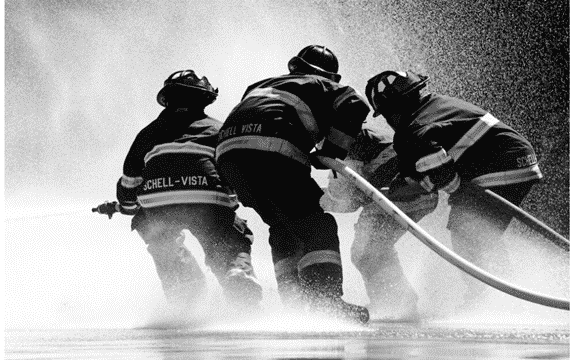
Brandschutztechnik

Smoke extraction in underground parking lots
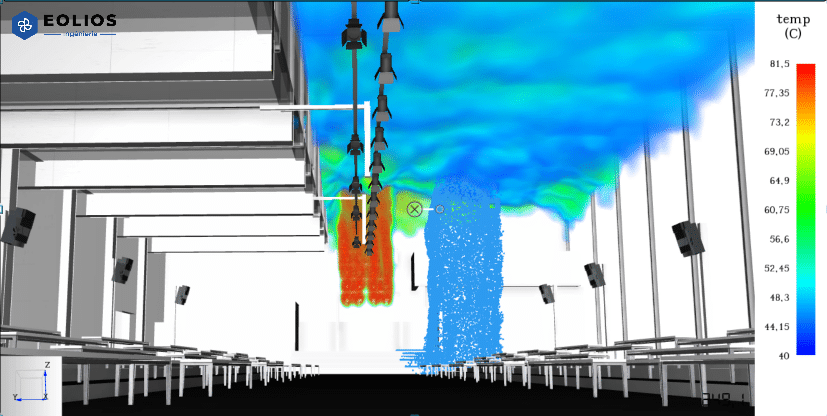
Sprinkler: how does a sprinkler system work?

Fire safety engineering

File: applying IT263 – smoke extraction from atriums
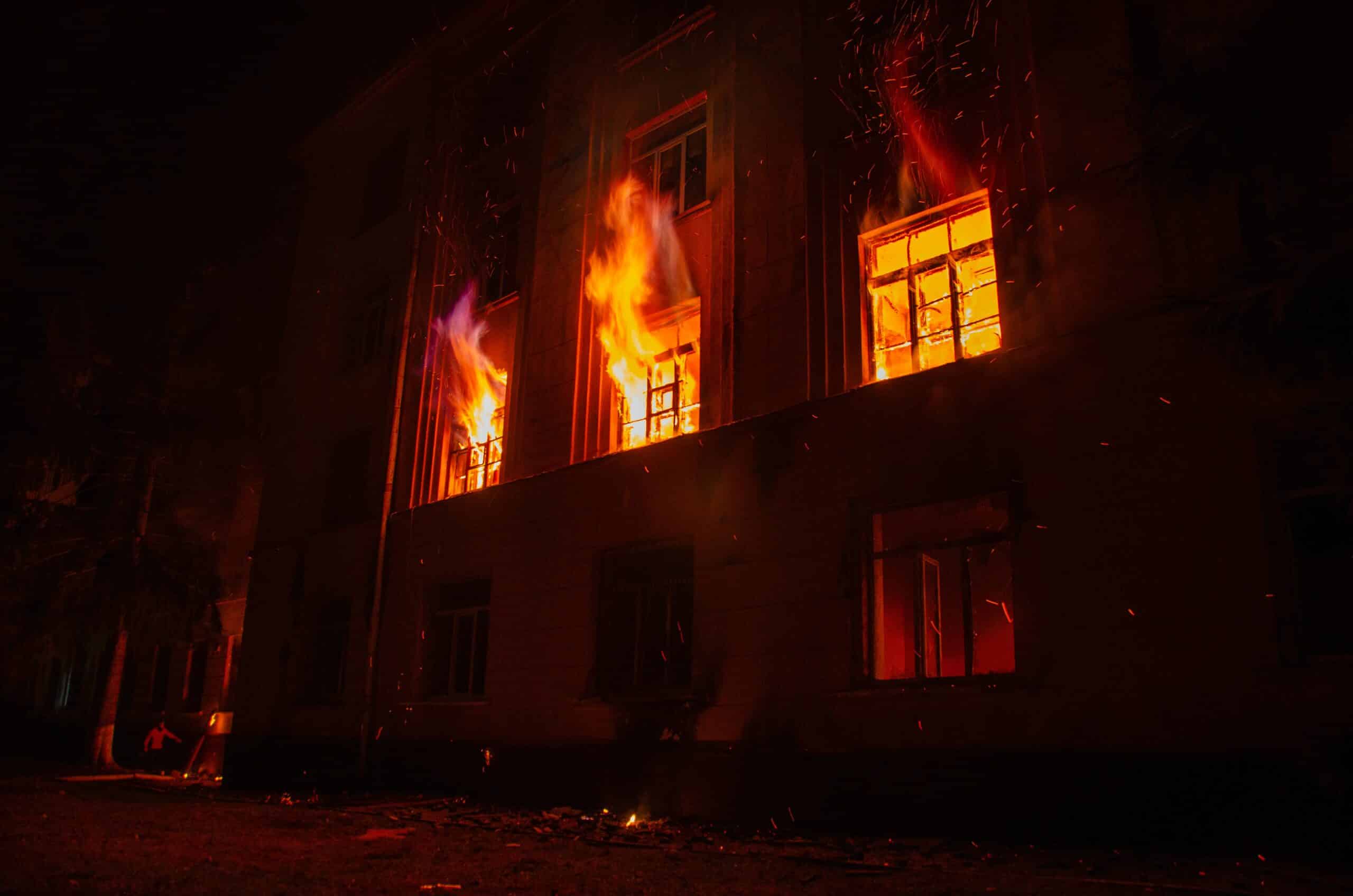
File: applying IT246

The ESSOC law for fire safety

The objectives of smoke control

Dynamic modeling of the evacuation of people


